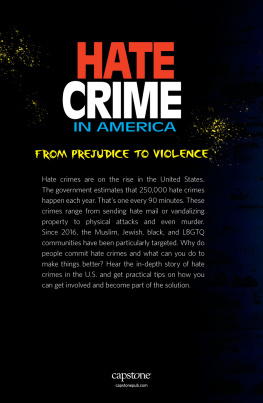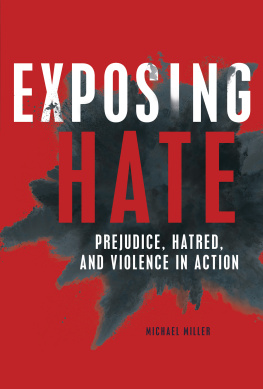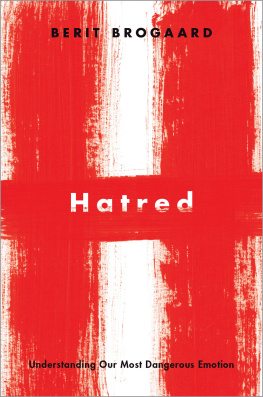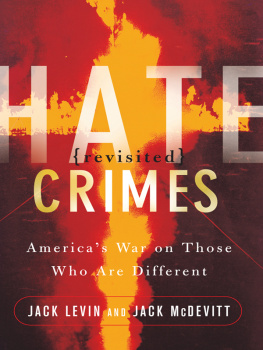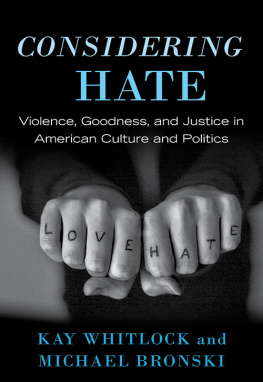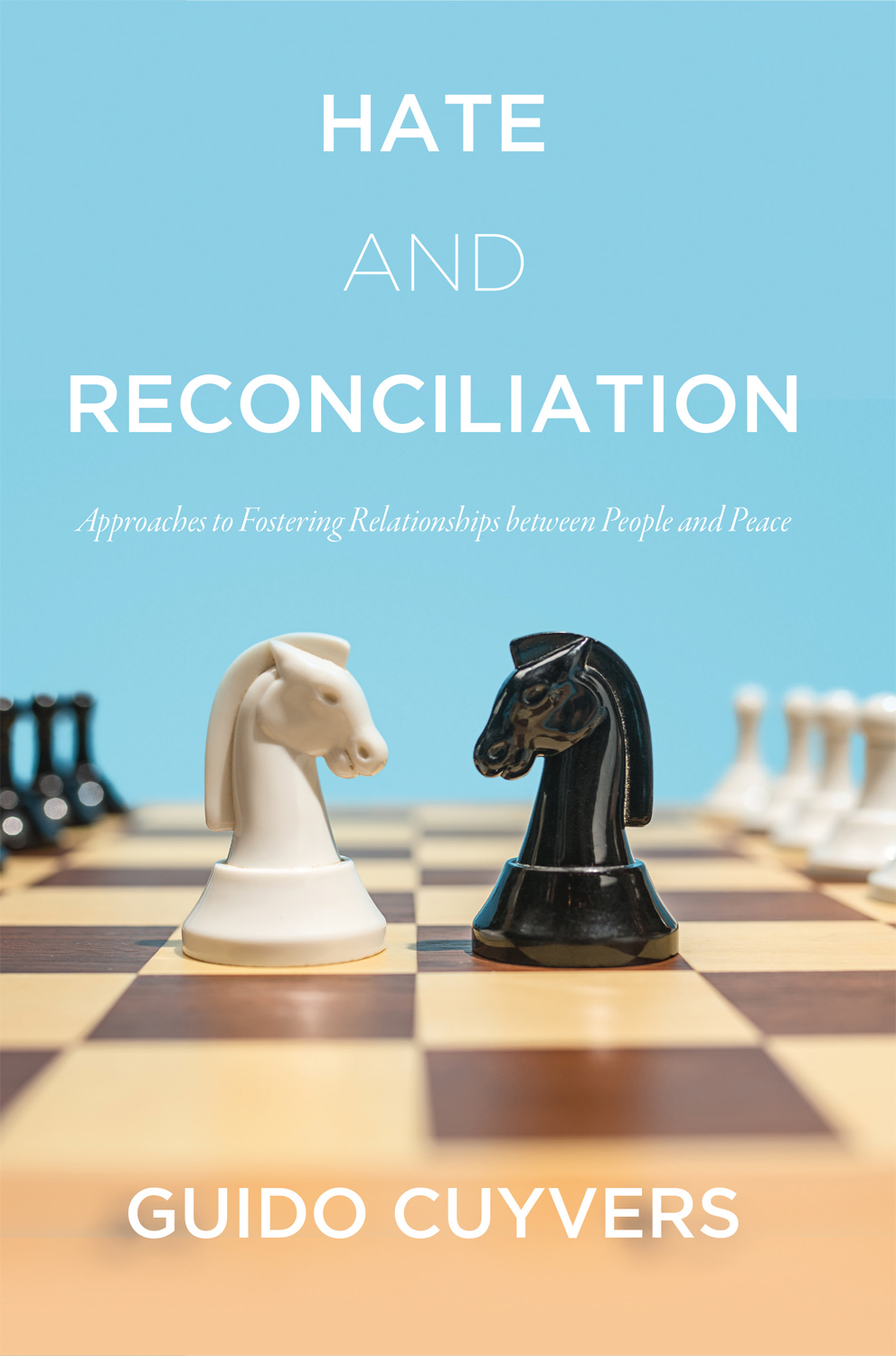Introduction:
F rom Erida to Eirene
Hatred is one of the most complex experiences people can have. It requires little imagination to recognize expressions of hate around you and, perhaps, also inside you. Occasionally, following the evening news is enough to realize how hatred also causes major cross-border conflicts between peoples or groups within a country. IS, Boko Haram, Syria, Myanmar, and the IsraeliPalestinian conflict are just a few current examples of this. Furthermore, hate appears to wither relationships between individuals. Family stories indicate how easily material banalities can give rise to long-lasting hatred and conflicts between brothers and sisters. The negative effects of bullying at school and at work are reflected in the pain of the victims. In addition, in recent years, the availability of the internet and social media simplifies remote hate. Hate has many faces and seems to be everywhere, that much is clear.
To symbolize the general human nature of hatred, we introduce the term Erida complex. By this term, we refer to every persons ability to experience hatred and potential to engage in hatred should the circumstances require it. We derive this term from Greek mythology, which portrays the goddess Erida as the goddess of hate. In this book, we derive the term Eridaic, a neologism, to refer to the intentions and actions that are closely related to hatred.
The most important consequence of confrontation with hatred is the degeneration of relationships between people into deserts, as philosopher Hannah Arendt puts it in her work Was ist Politik? (1993). Erida does her job. Hate turns a community into a less and less fertile oasis in which people cannot develop together. Dry ground that forms between people the desert leads to fear of others, of strangers, of the new. That is why people prefer to build bulkheads up rather than look for opportunities to develop a strong community together. That choice deludes them into thinking that they are safe. Hate is also at the root of most major conflicts between peoples with devastating consequences.
Opposite Erida, the symbol of hatred, we place Eirene, the Greek goddess of peace. Erida must not have the last word. Whoever is open to that, can observe many eirenic initiatives both to prevent hatred (for example, anti-bullying programs) and to tackle its consequences in a constructive way (for example, restorative approaches on a small and large scale). That people end up in situations in which they suffer injustice and feelings of hatred from others is often unavoidable. How they deal with that hatred, however, is a choice. Hate does not have to be fate. Whether one contributes with hate to the desertification of relationships or opts for an eirenic approach is the freedom that every person has. That freedom makes hatred powerless.
In this book we refer to the paradox of hate. It is a powerful destructive force and, at the same time, it is powerless against people making the positive choice to transcend it and develop relationships that are a source of peace. In this book, we opt for a nuanced and broad approach to the complex phenomenon of hate. To do this, it is necessary to correctly understand the phenomenon, which is why we start with an investigation into the essence of hate. The questions What is hate? and Where is hate expressed? constitute the core of the first chapter. Then, we analyze the factors and processes that provide an insight into the why of hate. The road that someone follows from experiencing feelings of hate and, possibly, hateful behavior, with radical consequences as a result, is the theme of the third chapter. We call that the way of Erida. Not only the victim and hater are involved but also the bystanders and the community. Hate affects everyone. In three consecutive chapters, we subsequently describe different levels of Eridaic behavior hatred between individuals, between groups and between nations. Opposite the road of Erida is the eirenic road the road to peace. That is why, in the last chapter, we look for the possibilities to constructively deal with hate and to promote peace so that the ground between people remains an oasis, i.e., fertile.
Chapter 1
Roots of Hatred
Hate is a pressing burden; he causes the heart to sink deep into the chest and lies heavy as a tombstone on all joys.
Goethe
1. Hate A Complex Dynamic
For centuries writers and poets, and also psychologists and philosophers, have been fascinated by the phenomenon of hatred. In accordance with their backgrounds, they focus on different aspects of hate and use different perspectives. To the simple question What is hate?, obtaining a clear answer is, therefore, not possible. We develop a nuanced definition in this chapter, which takes into account a wide range of factors and processes, both on a personal and on a broad, societal level. An analysis of many definitions teaches us that hate is a process that contains three components namely, a feeling, a conviction, and a behavior.
1.1 Hate as a process
Hate is first and foremost a process. It is much more than just a characteristic. The personhater or hate victimis both the subject and direct object, depending on whether or not a real, threatening experience (of himself or others) leads to negative feelings (anger, jealousy, aversion, etc.) that might incite a person to act.
Hate usually keeps a person in its grasp for a long time, sometimes for life. It is dynamic and can possibly develop furtherbecome more intense and violent, more visible, involve more parties, etc. Paul Ekman mentions that hate is a persistent, intense antipathy, accompanied by horror and contempt as a result of suffering . Hate gnaws and takes over a hater, so that he becomes obsessed with the hated person or group. The hate victim, too, risks being involved with hate for a long time. For example, a permanent confrontation with a perpetrator of a hate crime can lead to negative consequences for a victim. In that case, the victim hates the perpetrator more and more (e.g., a drunk driver drives a car, a child dies, the driver is barely punished and subsequently shows up in the village acting cheerfully as if nothing happened). The media can also keep hatred alive by repeatedly giving attention to a hating person or group.
In major hate-driven conflicts, those in power can use all kinds of resources to ensure that what once ignited the hatred of their followers is not extinguished. A very traditional means to keep a group together is to always confront it with a hate message through songs, slogans, and banners. To be effective, these means must appeal to the emotions of the people for whom they are intended. At the political level, propaganda, scare tactics, defamation campaigns, and indoctrination are known means. Then, there are also emotional languages, images and symbols (e.g., a clenched boxing glove). Currently social media and cyber life are of great importance. We return to this in more detail in the fourth chapter.
Doing nothing does not extinguish hate. If the underlying problem is not solved, hate continues to simmer and influence peoples perceptions. The sticking to hatred is like holding a hot piece of coal with the intention to throw it at someone; you are the one who burns himself (Buddha).
1.2 A combination of feelings, beliefs and behavior
What do people feel when they say I hate this or that person or group? Hate is always caught in a tangle of feelings. It does not stand alone but is always connected with other feelings, such as anger, anger, suspicion, aversion, etc. When I think of that man, I immediately feel angry again and at the same time I experience a disgust, a strong aversion to him for what he did to me; also the fear of ever meeting him again (an imagined example of a victim of rape).


